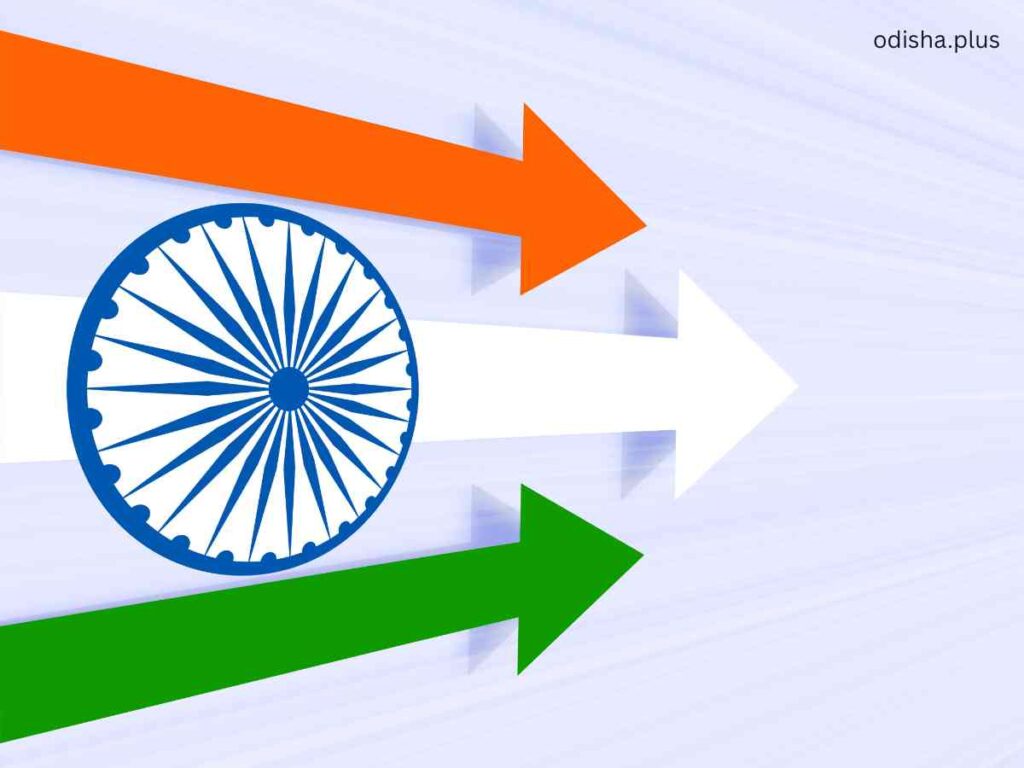Suresh Chandra Sarangi
An equal society may be a chimera, but India’s journey toward inclusive growth is a story of hope, resilience, and relentless effort.

In the book “Abundance”, the future is better than you think, a New York Times bestseller that serves as a manifesto for the future, grounded in practical solutions to address the most pressing problems. It is written that the present age is an age of the rising billions. The statement seems true, considering the World Bank report says that India has bridged income inequality status by securing the 4th position, which seems to be a spectacular achievement considering the geography, population, and cultural diversity of India. This has evoked intense debate in India, sometimes bitter, within the country, and the opposition has ridiculed it. Of course, over the years, we have developed a mentality, as viewed by the foreign media and some naysaying Indian intellectuals, that India stands for everything bad, and therefore, standing fourth globally in income equality with a Gini score of 25.5 is not a logical conclusion. It is a rejoicing fact that the extreme poverty has dropped to 2.3% in 2022-23 against a figure of 28 8 during 2011- 2012.
There is too much chatter, and it is a truism that India is the fastest growing economy, the world’s fourth largest economy, and now the most equal country in the world, next to the Slovak Republic, Slovenia, and Belarus. Let us read our preamble, which professes equality as an avowed doctrine of the Indian constitution, both political, economic, and social. Political equality, gender equality, and social equality were achieved long before. This time, India seems to have struck back, and the plethora of economic opportunities is responsible for the newfound status. Article 14, as enshrined in the Indian Constitution, very mentions it. But the founding fathers had a greater vision, which has come true in putting the pious intentions in Article 39 of the Indian constitution, in chapter 4, christened as the Directive Principles of State Policy. Though the Directive principles, per se, say that they are not justiciable in the court of law and hence are mere platitudes, yet, it speaks that the state shall endeavor to realise that dream, which is a pious objective to lift the teeming millions from the shackles of poverty. This has come true, and India seems to have redeemed that dream.
The report says that 171 million Indians moved out of extreme poverty between 2011-23. Now India’s Gini Index stands at 25.5, and no doubt it is a remarkable achievement for a country of India’s size and diversity. It seems that the fruits of economic progress are being shared by one and all through an appropriate mixture of public policies after freedom. The developments, particularly economic growth, have helped share prosperity, lifting people out of poverty, by delivering welfare measures in a calibrated manner. Let us try to decipher the Gini Index, which measures the extent to which the distribution of income or consumption among individuals, or for that matter any household within an economy, deviates from a perfectly equal distribution. A Gini index of 0 indicates perfect equality, while an index of 100 speaks of perfect inequality. It is to be understood that these data are based on primary household survey data obtained from government statistical agencies and also from World Bank documents. The higher the Gini index, the more unequal the country.
While making a comparative analysis of the World Bank data, India’s score is much lower than that of China’s 35.7, which too in a socialist country, and far lower than the United States, which stands at 41.8. It is indeed satisfying that the Indian society is more equal than all the G7 and G20 countries, which is an additional feather in India’s cap, thereby outshining many of the developed countries. It’s falling under the moderately low category. Right from the Beginning, just after Independence, through the five-year plans, India has been riding high. Developed infrastructure in roads, ports, airports, improvement in communication, use of TV, satellite communication, industrial policies and development, spread of education, and better healthcare seem to have paid the dividends. Both India, rural and urban areas are growing in tandem. The welfare measures and concept of the welfare state are driving India on the path of development and its people to the pinnacle of glory.
Think of DBT, Antodaya, rural employment guarantee scheme, MNREGA, skill India Mission helping the poor to skill themselves, Make in India to boost Economy and In manufacturing,, Digital India mission intended to shift the digital medium from urban to rural, financial inclusion, inclusive growth, Ujjala Yojana tended to reduce energy consumption, Midday meal scheme to attract poor students to education and controlling dropouts go a long way in the road to financial freedom and more income generation. The icing on the cake was the Pradhan Mantri Jan Dhan Yojana that enabled all citizens to have access to financial services and rewrite their destiny. The Atal Pension Yojana, Pradhanmantri Awas Yojana, and Pradhanmantri Kisan Bima Yojana gave thrust to farmers and supported agricultural growth.
Now, Amartya Sen’s concept of” development as freedom”, is coming true after India’s years of endeavour to enjoy the shared progress. This can help balance the political economy. By earning our freedom, we have just established political democracy, and we are very near to achieving social and economic democracy. The accelerated tempo of development and nuanced growth after freedom takes us to a glorious future. Political as well as economic freedoms are intricately webbed. Many countries of the world have cracked the pressing problems, and in a world of endless outrage, the rise of India seems to be exhilarating insofar as it uplifts the bottom billions. In that context, let’s at least feel that the sense of gloom and fear of doom has evaporated. But India has been a story of incredible success. However, amidst all the gloom, some achievements are spectacular, due to the implementation of economic models of development after freedom. Besides, its efforts at healthcare, insurance, and employment are constantly rejigged, and the collaborative approach has succeeded.
Skilling has helped to develop the core competencies of the Indian labour. Fintech like that of PhonePe has organised even the rural folk and the farmers, the unorganised sector youth, to reap full benefits and has triggered a million mutinies. India, no doubt, is competing for the future and bent upon to have a larger share of bread on the world stage.CK Prahalad, the noted management guru and author of the book “Fortunes at the Bottom of the Pyramid,” has worked well in dissolving the income disparity and bringing a revolution in the age of globalisation. His idea is that 4 billion people, representing the lowest strata of income, have lately become the transformer and harbinger of an economic revolution of immense proportions. The fortune at the bottom of the pyramid helped India to turn the tables, converting the income inequality into an economic opportunity, and has proved that economics and a good society are poised to make a turnaround.
Thomas Piketty’s Capital in the Twenty-First Century and a brief history of equality deliberates upon action and optimistic execution. He says that the grand sweep of history tells us to be optimistic, and India seems to have taken the lesson seriously. Notwithstanding the applause, there are brickbats in India, and the pessimists have thrown the report. Critics have said that India’s poverty decline may not be what it seems, as the methodology adopted is wrong, and the sample is not well spread, and instead of taking a holistic view, the survey has been done in a piecemeal manner. Whatever the case may be, despite world financial market meltdown, COVID pandemic bleeding tradition, two wars, and other unspeakable tragedy both in the home and outside, India’s living standard has increased over the years, An increased technocratic society, India has forged ahead, gained the best from globalisation and technology adoption, and from the convergence of finance and technology, like never before. That is what is gratifying to see India on the world map of a more equal society.
An equal society is a chimera. What is most important is to continue the efforts in the redistribution of wealth, without being complacent, for a more just and equal society. India gaining the position of the fourth most equal society in the world is a story of hope and resilience and let us strive to sustain and improve it.
(The writer is a former General Manager of Bank of India and currently a visiting professor at KIIT School of Management. Views expressed are personal.)























